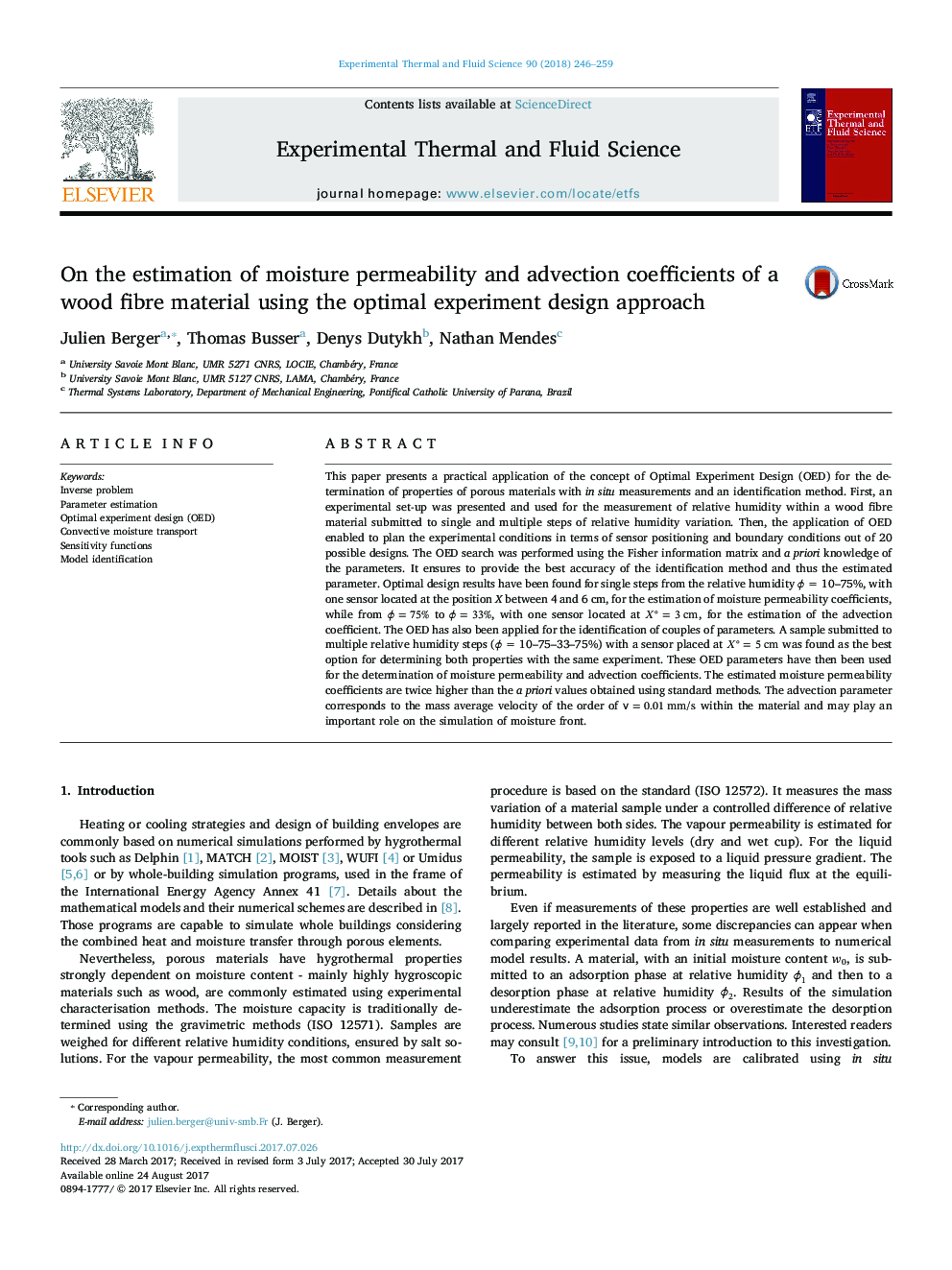| Article ID | Journal | Published Year | Pages | File Type |
|---|---|---|---|---|
| 4992439 | Experimental Thermal and Fluid Science | 2018 | 14 Pages |
Abstract
This paper presents a practical application of the concept of Optimal Experiment Design (OED) for the determination of properties of porous materials with in situ measurements and an identification method. First, an experimental set-up was presented and used for the measurement of relative humidity within a wood fibre material submitted to single and multiple steps of relative humidity variation. Then, the application of OED enabled to plan the experimental conditions in terms of sensor positioning and boundary conditions out of 20 possible designs. The OED search was performed using the Fisher information matrix and a priori knowledge of the parameters. It ensures to provide the best accuracy of the identification method and thus the estimated parameter. Optimal design results have been found for single steps from the relative humidity ÏÂ =Â 10-75%, with one sensor located at the position X between 4 and 6Â cm, for the estimation of moisture permeability coefficients, while from Ï=75% to Ï=33%, with one sensor located at Xâ=3cm, for the estimation of the advection coefficient. The OED has also been applied for the identification of couples of parameters. A sample submitted to multiple relative humidity steps (ÏÂ =Â 10-75-33-75%) with a sensor placed at Xâ=5cm was found as the best option for determining both properties with the same experiment. These OED parameters have then been used for the determination of moisture permeability and advection coefficients. The estimated moisture permeability coefficients are twice higher than the a priori values obtained using standard methods. The advection parameter corresponds to the mass average velocity of the order of v=0.01mm/s within the material and may play an important role on the simulation of moisture front.
Related Topics
Physical Sciences and Engineering
Chemical Engineering
Fluid Flow and Transfer Processes
Authors
Julien Berger, Thomas Busser, Denys Dutykh, Nathan Mendes,
